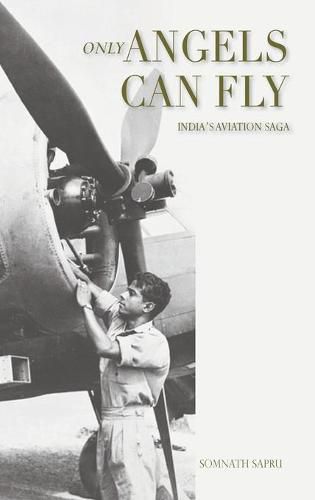Readings Newsletter
Become a Readings Member to make your shopping experience even easier.
Sign in or sign up for free!
You’re not far away from qualifying for FREE standard shipping within Australia
You’ve qualified for FREE standard shipping within Australia
The cart is loading…






This title is printed to order. This book may have been self-published. If so, we cannot guarantee the quality of the content. In the main most books will have gone through the editing process however some may not. We therefore suggest that you be aware of this before ordering this book. If in doubt check either the author or publisher’s details as we are unable to accept any returns unless they are faulty. Please contact us if you have any questions.
Aviation came to India by fits and starts mostly dictated by the British Empire’s strategic interests and commercial objectives and within India by English business community who were attracted by the speed of this new form of transport. It was in early thirties of the 20th century when flying clubs were started in major cities to attract young people to learn to fly.
The narrative takes the reader through the first steps when the Directorate of Civil Aviation was set up in 1927 and Indians learnt to fly themselves and the research work done by pioneers. It was during the inter-war period (1919-1939) that pioneer entrepreneurs tried to set-up an aircraft factory in the country and the obstacles they faced. And then came the long line of pioneer pilots who braved the odds and came out victorious.
The fair sex put in its claim too and the narrative gives the reader fascinating glimpses of how individual women pilots faced the problems of bias and succeeded to the extent that today (2020) India has the largest number of women pilots in the world.
Post-World War II, saw independence and private enterprise in the airlines sector struggling, and then the nationalisation of the industry with the state monopoly functioning for almost 40 years.
The narrative closes in 1953 when civil aviation went completely into Government hands and became a state monopoly. I hope the reader will enjoy the book as much as I did while writing it, despite numerous difficulties in getting accurate information. This is an attempt at recording the chievements of our fellowmen and women!
$9.00 standard shipping within Australia
FREE standard shipping within Australia for orders over $100.00
Express & International shipping calculated at checkout
This title is printed to order. This book may have been self-published. If so, we cannot guarantee the quality of the content. In the main most books will have gone through the editing process however some may not. We therefore suggest that you be aware of this before ordering this book. If in doubt check either the author or publisher’s details as we are unable to accept any returns unless they are faulty. Please contact us if you have any questions.
Aviation came to India by fits and starts mostly dictated by the British Empire’s strategic interests and commercial objectives and within India by English business community who were attracted by the speed of this new form of transport. It was in early thirties of the 20th century when flying clubs were started in major cities to attract young people to learn to fly.
The narrative takes the reader through the first steps when the Directorate of Civil Aviation was set up in 1927 and Indians learnt to fly themselves and the research work done by pioneers. It was during the inter-war period (1919-1939) that pioneer entrepreneurs tried to set-up an aircraft factory in the country and the obstacles they faced. And then came the long line of pioneer pilots who braved the odds and came out victorious.
The fair sex put in its claim too and the narrative gives the reader fascinating glimpses of how individual women pilots faced the problems of bias and succeeded to the extent that today (2020) India has the largest number of women pilots in the world.
Post-World War II, saw independence and private enterprise in the airlines sector struggling, and then the nationalisation of the industry with the state monopoly functioning for almost 40 years.
The narrative closes in 1953 when civil aviation went completely into Government hands and became a state monopoly. I hope the reader will enjoy the book as much as I did while writing it, despite numerous difficulties in getting accurate information. This is an attempt at recording the chievements of our fellowmen and women!